Showing 21-30 of 445 results
 southern.sare.org news southern-sare-producer-grant-call-for-proposals-released-3
southern.sare.org news southern-sare-producer-grant-call-for-proposals-released-3 Southern SARE Producer Grant Call for Proposals Released
GRIFFIN, Georgia – The Call for Proposals for the 2026 Producer Grant Program, intended for farmers/ranchers and farmer/rancher organizations throughout the Southern region, is now available from the Southern Sustainable Agriculture Research & Education (SSARE) program. Proposal submission deadline is December 5, 2025 at 12 p.m. (NOON) EST. Announcement of funded proposals will take place […]
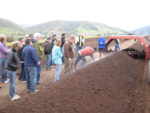 southern.sare.org news 2026-professional-development-program-grants-call-for-pre-proposals-released
southern.sare.org news 2026-professional-development-program-grants-call-for-pre-proposals-released 2026 Professional Development Program Grants Call for Pre-proposals Released
GRIFFIN, Georgia – The Call for Pre-proposals for the 2026 Southern SARE Professional Development Program (PDP) Grants is now open. One (1) or two (2) year proposals may be funded up to $100,000. The Professional Development Program is a “train the trainer” program, providing funding to agricultural professionals to train Cooperative Extension agents, USDA field […]
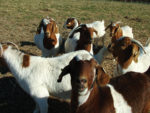 southern.sare.org news southern-sare-releases-2026-research-and-education-grant-call-for-pre-proposals
southern.sare.org news southern-sare-releases-2026-research-and-education-grant-call-for-pre-proposals Southern SARE Releases 2026 Research and Education Grant Call for Pre-proposals
GRIFFIN, Georgia -- The Southern region of the Sustainable Agriculture Research and Education (SARE) program has released its Call for Pre-proposals for the 2026 Research & Education Grants program. The release timeline for the 2026 Research & Education Grants Pre-proposal, along with the full proposal invite, has been adjusted. Please make a note of this […]
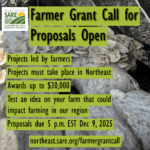 northeast.sare.org news call-for-2026-farmer-grant-proposals-now-open
northeast.sare.org news call-for-2026-farmer-grant-proposals-now-open Call for 2026 Farmer Grant Proposals Now Open
Proposals due by 5 p.m. EST, Dec 9, 2025.
The Northeast SARE Farmer Grant program provides funds to farmers to explore innovative concepts in sustainable agriculture conducted through experiments, surveys, prototypes, on-farm demonstrations or other research and education techniques.
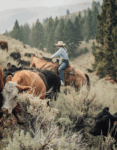 western.sare.org news range-riders
western.sare.org news range-riders Range Riders
Most Western SARE research projects use science to develop new knowledge, insights or practices to help farmers and ranchers in their quest to be more successful and sustainable. Some, though, rediscover and refine old knowledge – like the effectiveness of range riding to protect livestock from predators like wolves, mountain lions and bears. “It’s fascinating […]
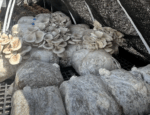 northeast.sare.org news growing-forest-mushrooms-in-other-settings
northeast.sare.org news growing-forest-mushrooms-in-other-settings Growing Forest Mushrooms in Other Settings
A recent Northeast SARE Farmer Grant project worked with several farms to test different methods of growing mushrooms alongside other crops, as well as measuring how much profit they could bring to farmers’ bottom line. In Farmer Grant project FNE24-077, “Forest Mushroom Production On Ready-to-Fruit Blocks”, Farmer Grant Project Leader Willie Crosby, of Fungi Ally […]
 northcentral.sare.org news apply-for-a-professional-development-program-grant
northcentral.sare.org news apply-for-a-professional-development-program-grant Apply for a Professional Development Program Grant
Proposals are due on November 5, 2025, by 4pm Central.
 www.sare.org news new-video-leverage-public-programs-for-land-and-support
www.sare.org news new-video-leverage-public-programs-for-land-and-support New Video: Leverage Public Programs for Land and Support
Many beginning farmers find buying land a challenge when they first start their business. At Brandon Family Farm in West Kingston, R.I., Alby and Heather Brandon discuss how public programs and creative partnerships can help grow a thriving business. “You definitely don’t need to own land to start a farm business,” says Alby Brandon, who […]
 northcentral.sare.org news apply-for-a-partnership-grant
northcentral.sare.org news apply-for-a-partnership-grant Apply for a Partnership Grant
Proposals are due November 20, 2025 by 4pm Central.
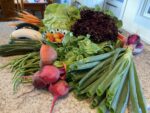 www.sare.org news new-from-sare-farmer-to-farmer-manuals-on-specialty-crop-production-harvest-and-storage-in-the-northeast
www.sare.org news new-from-sare-farmer-to-farmer-manuals-on-specialty-crop-production-harvest-and-storage-in-the-northeast New from SARE: Farmer-to-Farmer Manuals on Specialty Crop Production, Harvest and Storage in the Northeast
The Northeast Crop Production Manual and Northeast Harvest Manual are user-friendly guides offering step-by-step information on growing, harvesting and handling dozens of specialty crops.